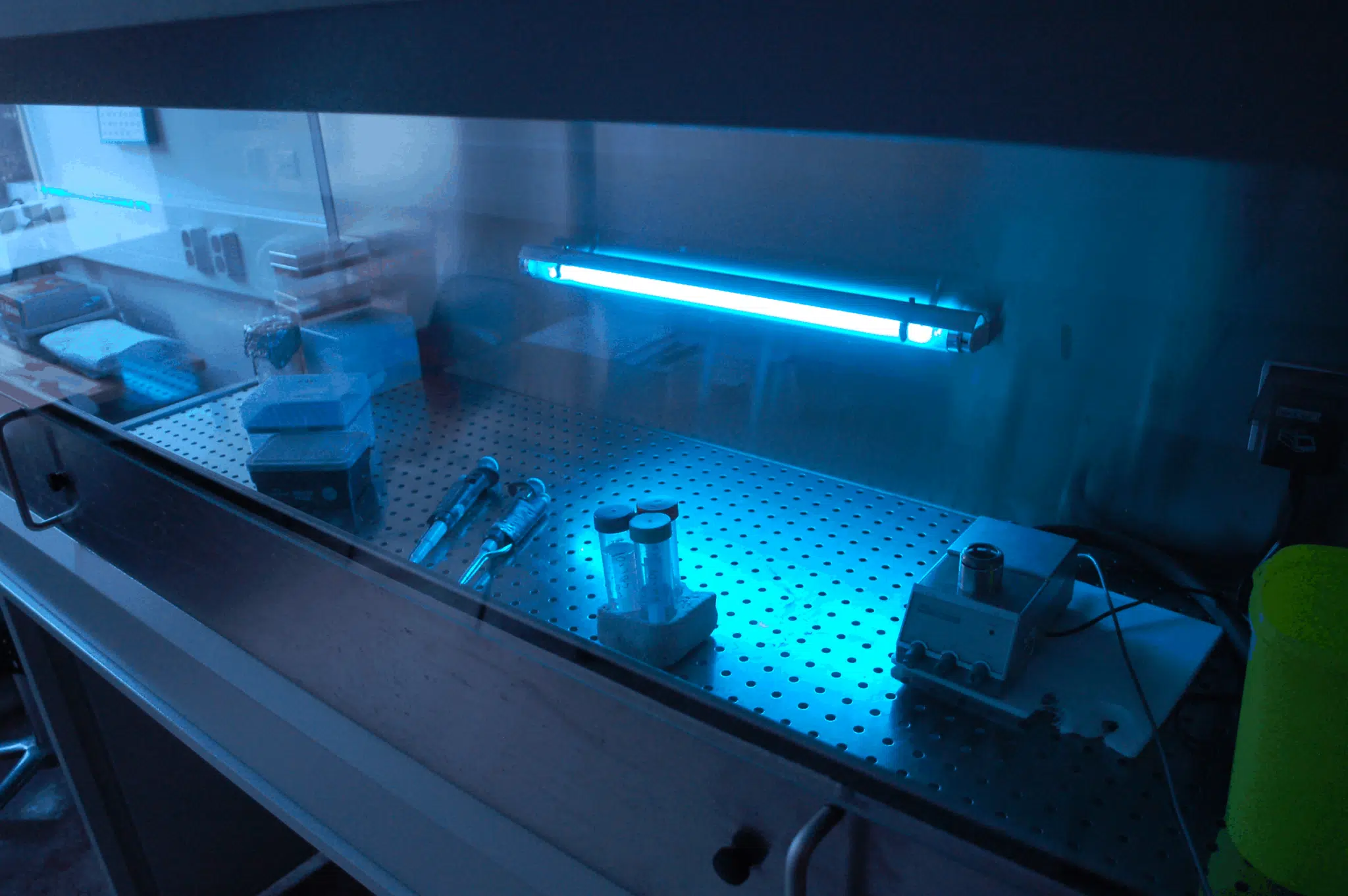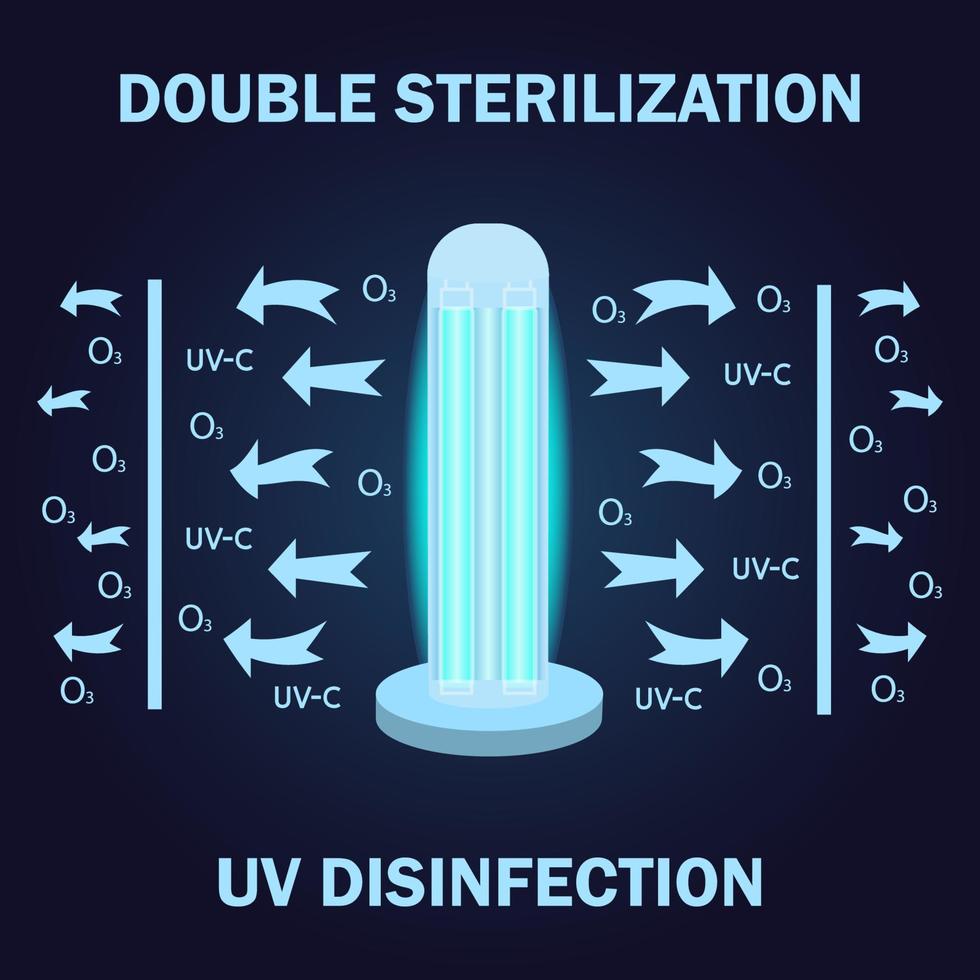Unleashing the Power of UV Surface Disinfection: Guarding Against Hazardous Virus
Unleashing the Power of UV Surface Disinfection: Guarding Against Hazardous Virus
Blog Article
Taking Advantage Of the Potential of UV Sanitation: Shielding Health and Health
UV disinfection, a technology widely made use of in numerous sectors, has actually confirmed reliable in eliminating hazardous virus. From understanding the systems at play to implementing this innovation in our daily lives, this conversation intends to shed light on the capacity of UV disinfection and its function in safeguarding our health and wellness and hygiene.
Comprehending UV Disinfection
UV disinfection is a very effective and extensively made use of technique for removing unsafe pathogens and ensuring health and hygiene. This strategy makes use of ultraviolet (UV) light to inactivate microbes by damaging their DNA and preventing them from duplicating. UV disinfection is particularly reliable against germs, viruses, and other bacteria that can trigger infections and illness.
The concept behind UV sanitation is straightforward yet powerful. When UV light is discharged at a details wavelength, it penetrates the microorganism's cell wall surface and disrupts its hereditary product. This process, called photodissociation, leads to the development of thymine dimers, which protect against the bacterium from duplicating and making it harmless. UV sanitation can be applied in various setups, consisting of water therapy plants, medical care centers, food handling industries, and air purification systems.
Among the benefits of UV disinfection is its capability to efficiently and effectively remove a large range of pathogens without the requirement for chemicals or additives. Unlike various other disinfection approaches, such as chlorine or ozone, UV sanitation does not present unsafe by-products or chemical residues right into the setting. In addition, UV disinfection is a non-contact procedure, which means that it does not call for physical contact with the bacteria, decreasing the danger of cross-contamination.

The Scientific Research Behind UV Sanitation
The performance of UV disinfection hinges on its ability to disrupt the genetic product of bacteria, making them unable to duplicate and thus removing their unsafe potential. UV, or ultraviolet, radiation is a form of electro-magnetic radiation with wavelengths much shorter than noticeable light. It is classified right into three types: UV-C, uv-b, and uv-. UV-C radiation, particularly, has the fastest wavelength and the highest possible power. Due to the fact that it can penetrate the cell walls of microorganisms and harm their DNA or RNA., this high-energy UV-C radiation is most effective in disinfection applications.
When microbes are subjected to UV-C radiation, the energy is taken in by their genetic material, causing bonds to damage and forming chemical reactions that disrupt their capability to reproduce. This prevents the microorganisms from spreading out and replicating infection. UV disinfection is especially reliable versus infections, fungis, and microorganisms, consisting of common virus such as Escherichia coli, Salmonella, and Influenza.
The science behind UV sanitation is sustained by comprehensive research and research studies. It has actually been revealed that exposure to an adequate dosage of UV-C radiation can attain a high degree of sanitation, often surpassing 99.9% efficacy in eliminating microbes. It is important to note that the performance of UV disinfection depends on numerous elements, including the intensity of UV-C radiation, exposure time, distance from the UV resource, and the susceptibility of the bacterium to UV radiation (uv surface disinfection).
Applications of UV Disinfection
Offered the comprehensive study and efficiency of UV sanitation in interrupting the genetic material of microbes, it is necessary to check out the numerous practical applications of this innovation. UV disinfection has shown to be a beneficial device in a wide variety of markets where preserving a risk-free and clean setting is important.
One significant application of UV disinfection is navigate to this website in health care setups. UV light can be made use of to decontaminate surfaces, devices, and also the air in health centers and clinical facilities. This aids to lower the danger of healthcare-associated infections and ensures a safer setting for patients and health care employees.
Another crucial application is in the food and beverage industry. UV disinfection is made use of to treat water and remove hazardous pathogens, such as E. coli and Salmonella, from the manufacturing procedure. uv surface disinfection. This ensures the safety and security and top quality of the products we consume
UV disinfection is likewise widely utilized in water treatment plants and wastewater therapy centers. It is an effective method for destroying harmful germs, viruses, and bloodsuckers that can be present in water resources. This aids to provide clean and secure alcohol consumption water to communities and protect the setting from contamination.
In addition, UV sanitation is utilized in the pharmaceutical sector to decontaminate tools and keep the integrity of products. It is also made use of in labs and study facilities to avoid contamination and make sure exact results.
Advantages of UV Disinfection Innovation
One noteworthy benefit of utilizing UV sanitation modern technology is its capability to efficiently remove microorganisms without the usage of extreme chemicals. This is especially beneficial in different setups, such as health care facilities, water therapy plants, and food handling industries, where the presence of harmful pathogens postures a substantial threat to public wellness and safety and security.
Unlike typical sanitation methods that rely upon chemicals like chlorine or ozone, UV sanitation innovation utilizes ultraviolet light to target and ruin the DNA of bacteria, efficiently counteracting their capability to recreate and trigger infections. This process not only removes the requirement for potentially hazardous chemicals yet likewise lowers the danger of chemical deposit or results remaining in the treated atmosphere.

In home addition, UV sanitation modern technology is eco-friendly. As it does not count on making use of chemicals, it eliminates the requirement for their disposal, transport, and manufacturing, decreasing the overall carbon impact related to disinfection procedures. In addition, UV sanitation systems have a longer life expectancy compared to chemical-based methods, causing much less constant substitute and additional decreasing waste.
Applying UV Sanitation in Daily Life
To properly implement UV disinfection in life, people and companies can integrate portable UV disinfecting devices right into their hygiene regimens and cleansing methods. These devices are created to give off ultraviolet light, which has been proven to eliminate or suspend a variety of bacteria, consisting of viruses, bacteria, and fungi. By utilizing mobile UV sanitizing gadgets, people can disinfect generally touched things and surface areas, such as cellular phone, doorknobs, laptop computers, and secrets, minimizing the threat of spreading out bacteria and infections.
Along with including mobile UV disinfecting tools, it is vital to follow appropriate standards and suggestions for efficient UV sanitation. This consists of guaranteeing that the tool is used properly and for the recommended period to accomplish ideal disinfection results. It is also vital to focus on precaution, such as using safety eyewear and avoiding direct exposure of the UV light to the skin.

In addition, companies can apply UV disinfection technology in numerous setups to enhance hygiene techniques. Medical facilities and healthcare facilities can use UV sanitation robotics to sterilize patient areas, operating movie theaters, and other high-touch areas. Food handling sectors can integrate UV disinfection systems right into their assembly line to enhance food safety and avoid contamination.
Conclusion
In conclusion, UV sanitation modern technology holds wonderful prospective in safeguarding health and health. By harnessing the power of ultraviolet light, it successfully gets rid of hazardous microbes and decreases the danger of infections. This modern technology can be applied in numerous setups, such as health centers, water treatment facilities, and public areas, supplying a safe and efficient method of sanitation. With its many benefits, UV disinfection is an important device for keeping a clean and healthy environment.
Unlike various other disinfection methods, such as chlorine or ozone, UV sanitation does not present unsafe by-products or chemical deposits right see it here into the atmosphere. It is essential to keep in mind that the performance of UV disinfection depends on numerous variables, including the intensity of UV-C radiation, direct exposure time, range from the UV resource, and the sensitivity of the microorganism to UV radiation.
One more advantage of UV sanitation technology is its capacity to offer fast and continuous disinfection. Unlike manual cleaning techniques, which can be lengthy and need substantial labor, UV disinfection systems can be automated and run constantly, guaranteeing consistent sanitation without human intervention.To effectively implement UV sanitation in daily life, companies and people can include portable UV disinfecting tools right into their health regimens and cleaning up techniques.
Report this page